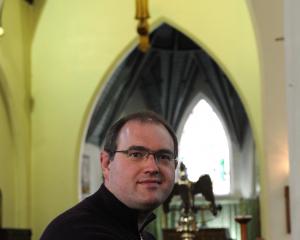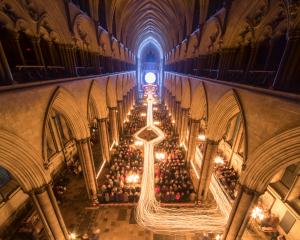Despite the statistical decline of Christianity in New Zealand, there is also encouragement, Tim Cooper writes.
I am in the middle of teaching my students the history of Christianity in New Zealand.
You might think that is a simple story of sad decline.
Well, it is.
But that's not the only story.
At the beginning of the 20th century around 96% of people ticked some sort of Christian box in the census.
By the time of the 2013 census that figure had dropped by half.
It is easy to see that as a catastrophe, but 48% remains a high figure.
Think about this for a moment: today, nearly half of the population consider themselves Christian.
Yet we are told this is a secular country.
It is, in the sense that there is no established church.
The State is officially neutral towards all faiths and denominations.
But in the last census around two-thirds of the population declared their adherence to some variety of religious faith.
In that sense, taking the population as a whole, New Zealanders remain mostly religious.
Yet the distribution of Christian belief is uneven.
It is weakest of all among younger, Pakeha, university-educated people.
It is the university-educated - academics, politicians and journalists - who are in a position to shape this country's self-narrative.
It is possible they tell us we are a secular (i.e., non-religious) country partly because they are non-religious.
A lot of the decline can be traced back to powerful cultural and technological changes that swept through the Western World in the 1960s.
The globe opened up through jet travel and the pluralisation that came with increased immigration from non-European countries.
The pill detached sex from procreation, facilitating the decline of a previous morality of abstinence.
Television offered a private forum for entertainment and information.
Other social settings opened up where young adults could find a life partner.
As a result of all these changes many of the generation of the 1960s stopped doing what so many of their parents and grandparents had done - they stopped going to church.
And their children in turn became one more step removed from church attendance.
So, there is no denying the downward trajectory.
Over the last five decades the number of those declaring a Christian adherence in the census steadily declined, while the number of those professing "no religion'' increased.
Those two figures are converging, and if the pattern continues the number of those answering "no religion'' will soon exceed those who declare a Christian adherence.
Are we back to that story of sad decline?
Not entirely.
In a 2013 article, Dunedin historian Alison Clarke shows that attendance on any given Sunday morning peaked at around 30% at the end of the 19th century.
For most of the early 20th century rates of attendance seem to have remained between 20% and 30%.
Then came the 1960s, when attendance may have dropped to something more like 10%.
But the latest estimates are that one in five New Zealanders - including a significant number of immigrants - go to church at least once a month.
They do not do so because it is socially desirable, as it was in the 19th century, but out of genuine conviction.
And while many congregations comprise mostly the elderly, that is far from true of all.
Large portions of the Church are vibrant and growing.
The biggest change has been in the practice of irregular attendance.
Up until the 1960s most people found themselves in church at some point during the year.
They were at least familiar with what went on inside a church service.
That is no longer the case.
Today, large swathes of the population have rarely or never set foot inside a church.
So a significant challenge for churches is to make their activities relevant, meaningful, open and unthreatening to those who have no idea what goes on in a church service.
What I am suggesting is that despite the unmistakable statistical decline there is also encouragement.
Plenty of New Zealanders still go to church on a Sunday morning. Even more think of themselves as Christian.
The Church may have lost its former place of speaking from the centre of society, but the margins may be a safer place for the Church to be.
Perhaps the Church ought to be the prophet at the gate, not chaplain to the nation.
The social prestige of the Church in the West posed spiritual dangers of coerciveness, complacency and conformism to which Christians too often succumbed.
The Church can now get on with the business of being church, of bearing witness to the love of God through Christ in ways that make sense to the culture around it.
It does not need to be discouraged or defensive in the face of a gloomy and pessimistic narrative of decline.
Christians can continue to trust Christ is building his church, just as he promised, even in New Zealand.
● Tim Cooper is associate professor of church history in the department of theology and religion at the University of Otago.











